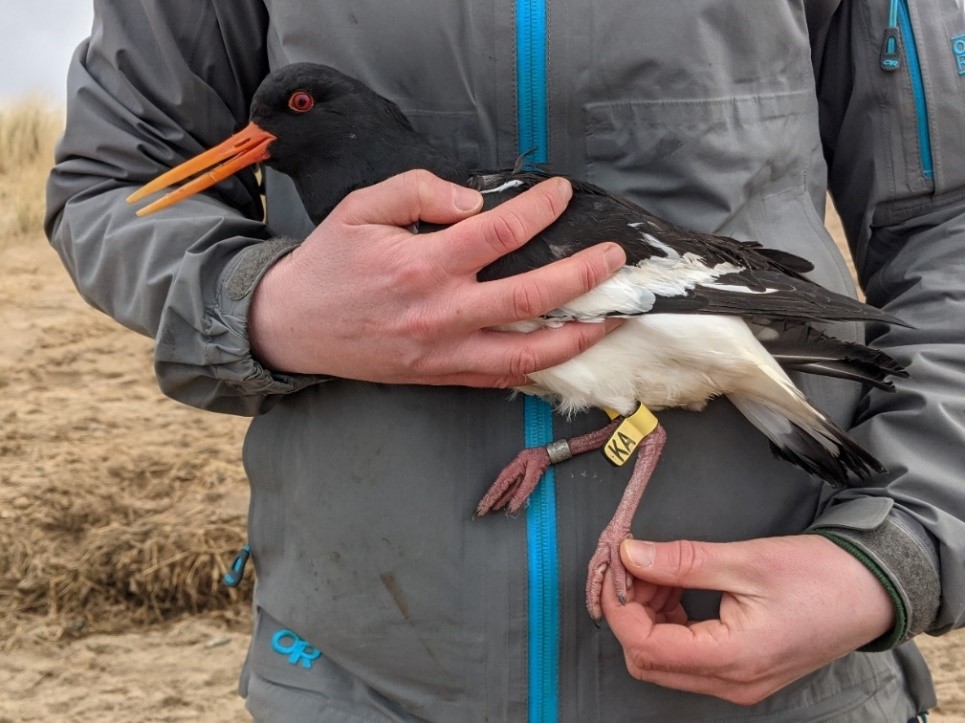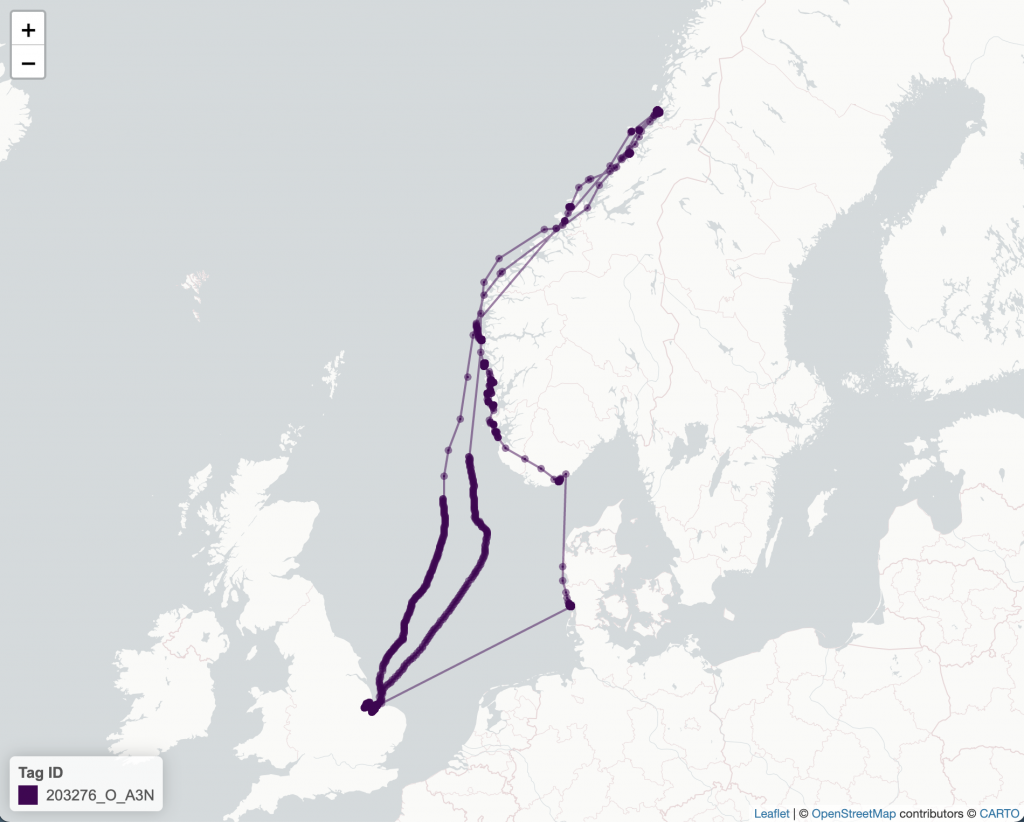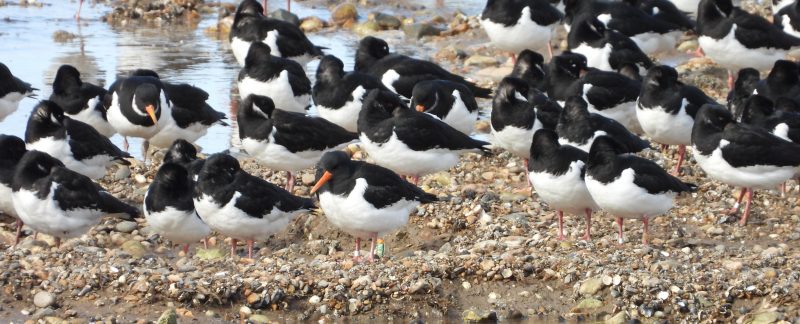One of the most visible birds on The Wash beaches must be the Oystercatcher. With its distinctive black and white plumage, orange bill and strident ‘kleep’ call, it’s certainly hard to miss! But where do ‘our’ Oystercatchers go when they leave The Wash? The map summarises the international movements of ‘our’ Oystercatchers – the red triangles are birds ringed abroad and found on The Wash, the blue dots are birds we ringed that were found abroad. It is clear that there is a really strong connection between The Wash and Norway – which is where most of the Oystercatchers wintering on The Wash go to breed. Most of these reports are of metal-ringed birds but, in recent years, we and other groups have used colour marks and tags to track movements in greater detail, and these sometimes produce very rapid feedback.

A quick visit?
On 6 March this year we made a small catch of Oystercatchers on Heacham Beach, including a bird colour-marked in the Lofotens, Norway. It was great to see this bird and anticipate what we might learn from its sighting history. However, the cherry on the cake was hearing that, just nine days after we caught it (15 March), it was already back in the Lofoten Islands. As we don’t know if it spent the winter on The Wash (it may well have done), or was just passing through on its way back to its summer home, we’ll certainly be looking out for it next autumn to see whether it returns!

Staying for the winter
Another individual that we know well is ‘A3N’. This bird was fitted with a small tag back in December 2020. These tags use solar power to ‘talk’ to the mobile phone network, providing regular (daily when it is sunny) updates on the bird’s location. So we got even quicker feedback (next day) when ‘A3N’ decided to head back to Norway for the summer. On 7 April, ‘A3N’ checked in and we saw it left The Wash on the previous evening, making good use of the tail winds as it took a northerly route direct to Norway. Interestingly, last year it set off in a more-westerly direction to Denmark, before heading north to the Norwegian coast which it then followed to its breeding site. The map shows its journey to and from the breeding grounds last year, as well as its northward journey this year – which is rather similar to its return route in 2021. Let’s hope it has a good year and we look forward to welcoming it back in the autumn.


